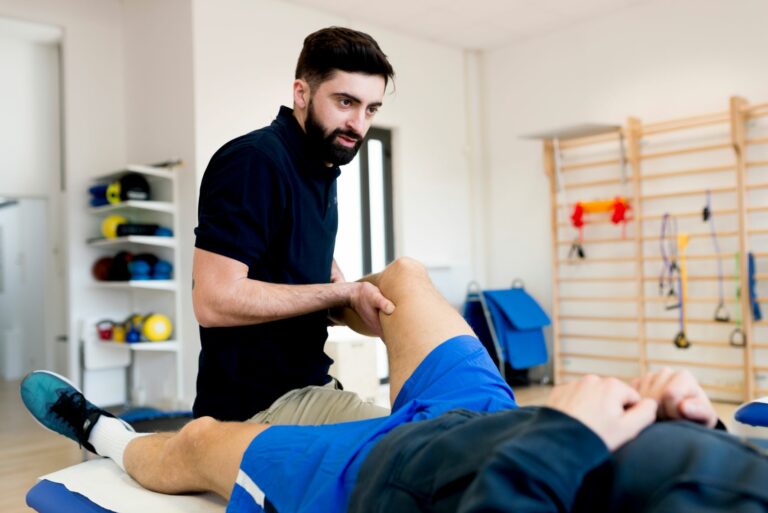Without a proper examination, it would be difficult to determine what would be most beneficial for you. Considering what you’ve described, it makes sense that your running feels awkward, particularly if your anterior tibialis muscle is weak.
What does the anterior tibialis muscle do?
This anterior tibialis performs dorsiflexion at your ankle, bringing your foot toward your shin. This movement is important because it keeps you from dragging your toes while you run, which keeps you from tripping. The longer you run, the more fatigued this muscle can get. This may be why your running feels awkward.
How can I strengthen my anterior tibialis muscle?
Some exercises that would be good to strengthen your anterior tibialis muscle include toe raises (seated or standing), heel walks, dorsiflexion pulls with band resistance, and a calf stretch. These exercises target the anterior tibialis muscle directly and can help improve its strength and endurance over time. Additionally, incorporating balance exercises such as single-leg stands or stability ball exercises can further engage the anterior tibialis muscle and improve overall lower limb stability.
Moreover, integrating proprioceptive exercises into your routine can enhance neuromuscular control and proprioception, which are crucial for preventing future injuries. Proprioceptive exercises involve activities that challenge your body’s awareness of its position in space, such as balance board exercises or single-leg squats on an unstable surface. These exercises not only strengthen the anterior tibialis muscle but also promote overall lower limb stability and reduce the risk of recurrent injuries.
Additionally, consider incorporating dynamic movements into your workout routine to mimic the demands of running more closely. Exercises such as high knees, butt kicks, lateral jumps and skipping can help improve muscle coordination, agility and power, contributing to a more efficient and comfortable running gait.
Again, without doing a full examination, I can’t determine where you are at and what you need, but it would be advisable to not only go after the strength of the muscle but also build the endurance of the muscle. You can achieve endurance by doing 3 sets of each exercise to fatigue. Working to fatigue means that you work the muscle until it gets tired and you can’t complete a full motion of the exercise. Also, make sure this happens before the onset of any pain.
Can physical therapy help?
A comprehensive approach to strengthening the anterior tibialis muscle involves a combination of targeted exercises, balance training, proprioceptive exercises, and dynamic movements.
By incorporating these strategies into your workout routine, you can effectively improve muscle strength, endurance, and overall lower limb stability, ultimately enhancing your running performance and reducing the risk of future injuries.
However, if you are still finding it difficult to gain strength/endurance of your anterior tibialis muscle after doing these exercises, I would see a physical therapist as they can do a full examination and determine in greater detail the reason for your weakness. Once an assessment reveals the root of the problem, your PT will work with you to create a customized plan of care for your rehabilitation.


Start your physical therapy journey today.
As physical therapists, we know the importance of movement for overall health and well-being. From injury recovery to achieving optimal performance, our passion is to help every patient reach their goals and live an active, pain-free life.

